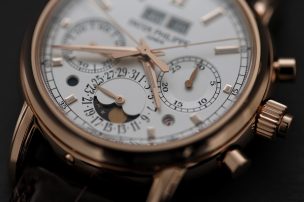

W&W 2025: The Chopard L.U.C Quattro Reinterpreted – Jubilee Model Marks 25th Anniversary
There is always room for more in the world of fine watchmaking – and few collections embody this aspiration as convincingly as Chopard’s L.U.C collection and the L.U.C 98.01-L calibre. Since the launch of the first L.U.C Quattro in 2000, the L.U.C line has evolved into a fusion of innovation and tradition, consistently redefining itself through models ranging from the classic three-hand watch to the in-house chronograph and even a minute repeater with striking mechanism – a progression largely shaped by the L.U.C 98.01-L calibre.
To mark the 25th anniversary of the first L.U.C Quattro and in celebration of Watches and Wonders 2025, Chopard is now unveiling a jubilee edition of the Quattro in 18-carat ethical rose gold (Ref. 161954-5001). How the refined design of this new release sets the course for future models and what surprises it still holds in store – all of this is explored in this article.
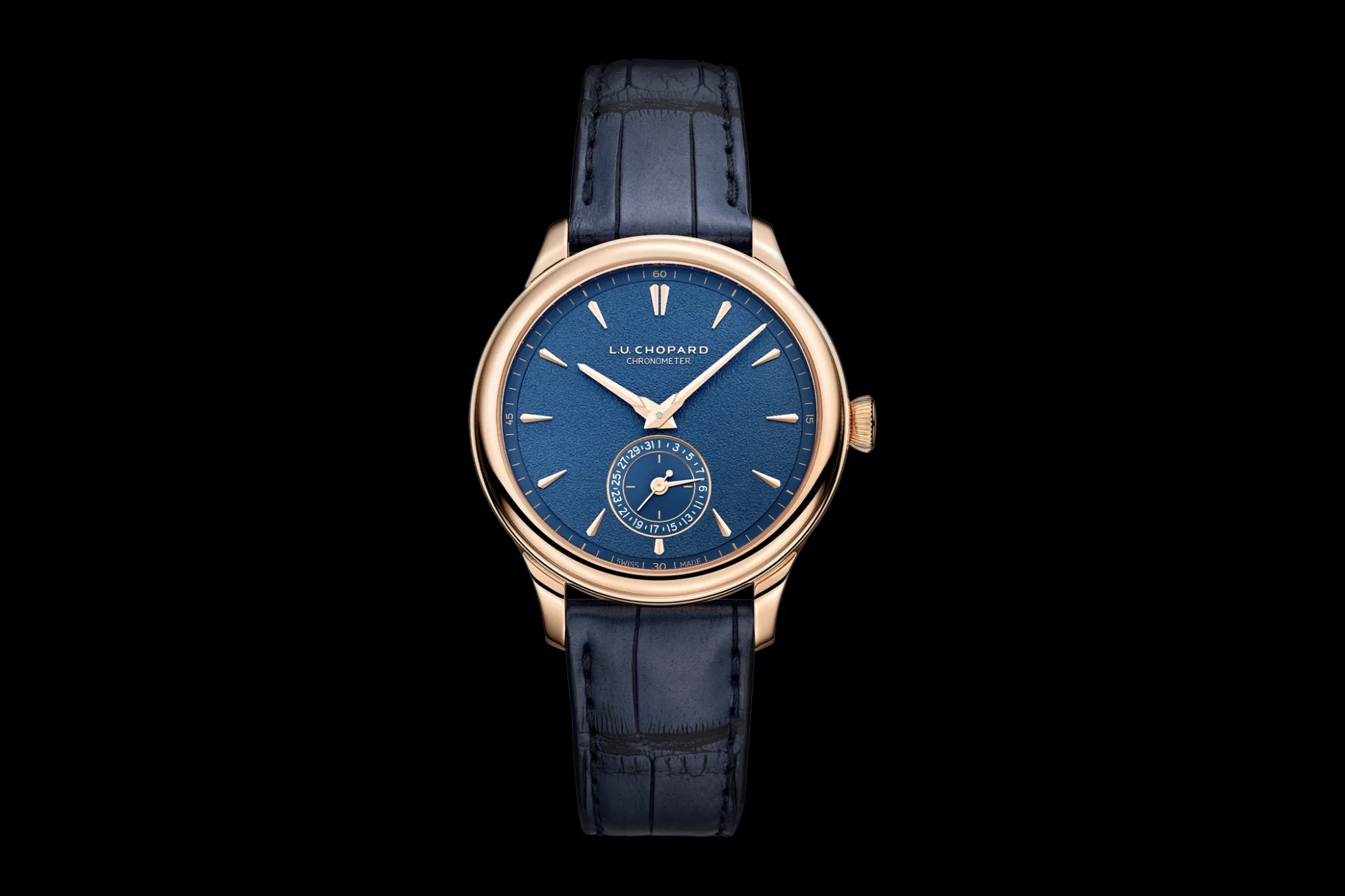
Why the L.U.C 98.01-L calibre is so important for Chopard
In 1997, the Chopard manufacture introduced its first timepiece from its own workshops: the L.U.C 1860, equipped with the L.U.C 96.01-L movement (originally 1.96). As one of the first automatic movements with twin barrels, the watch boasted a power reserve of 65 hours.
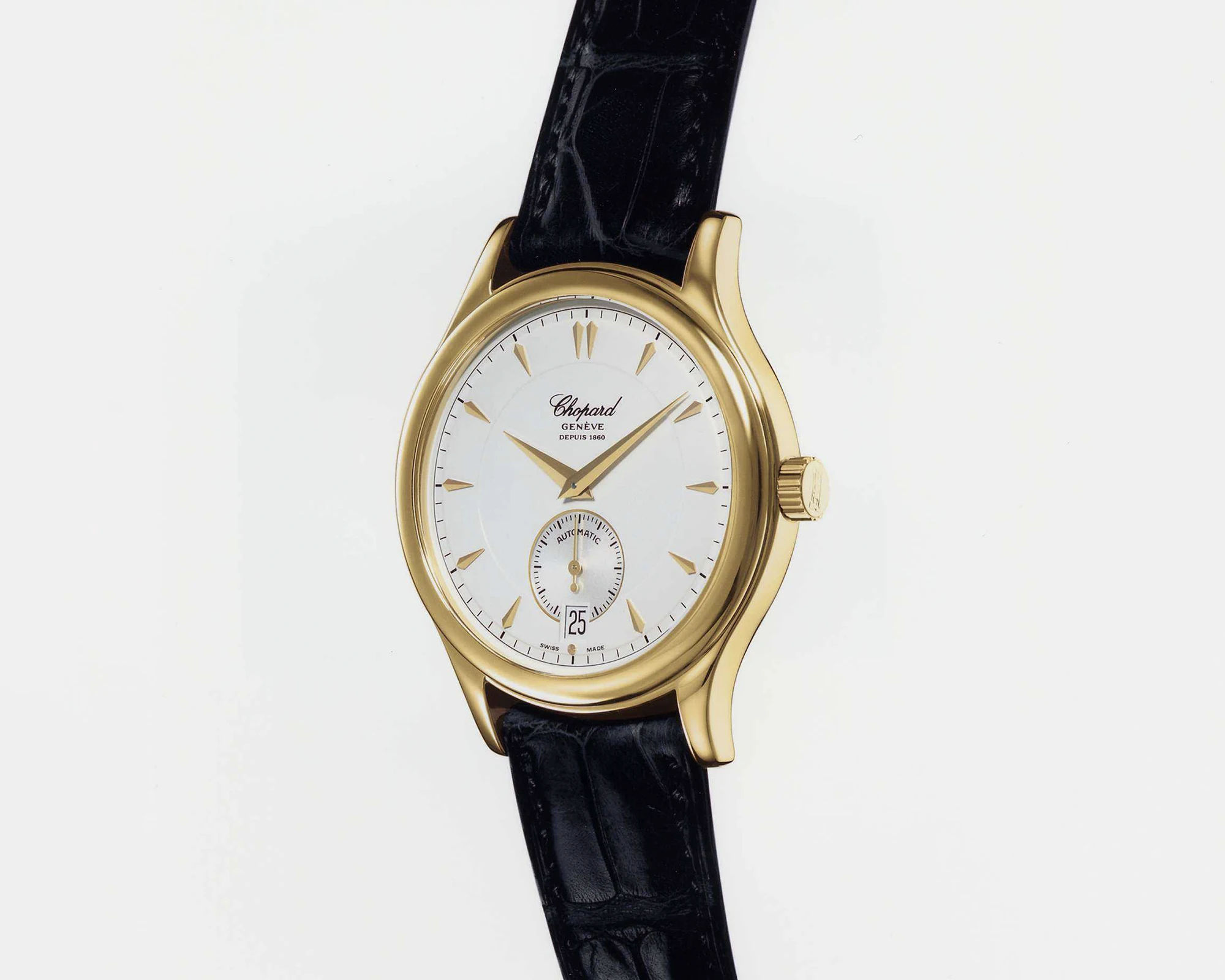
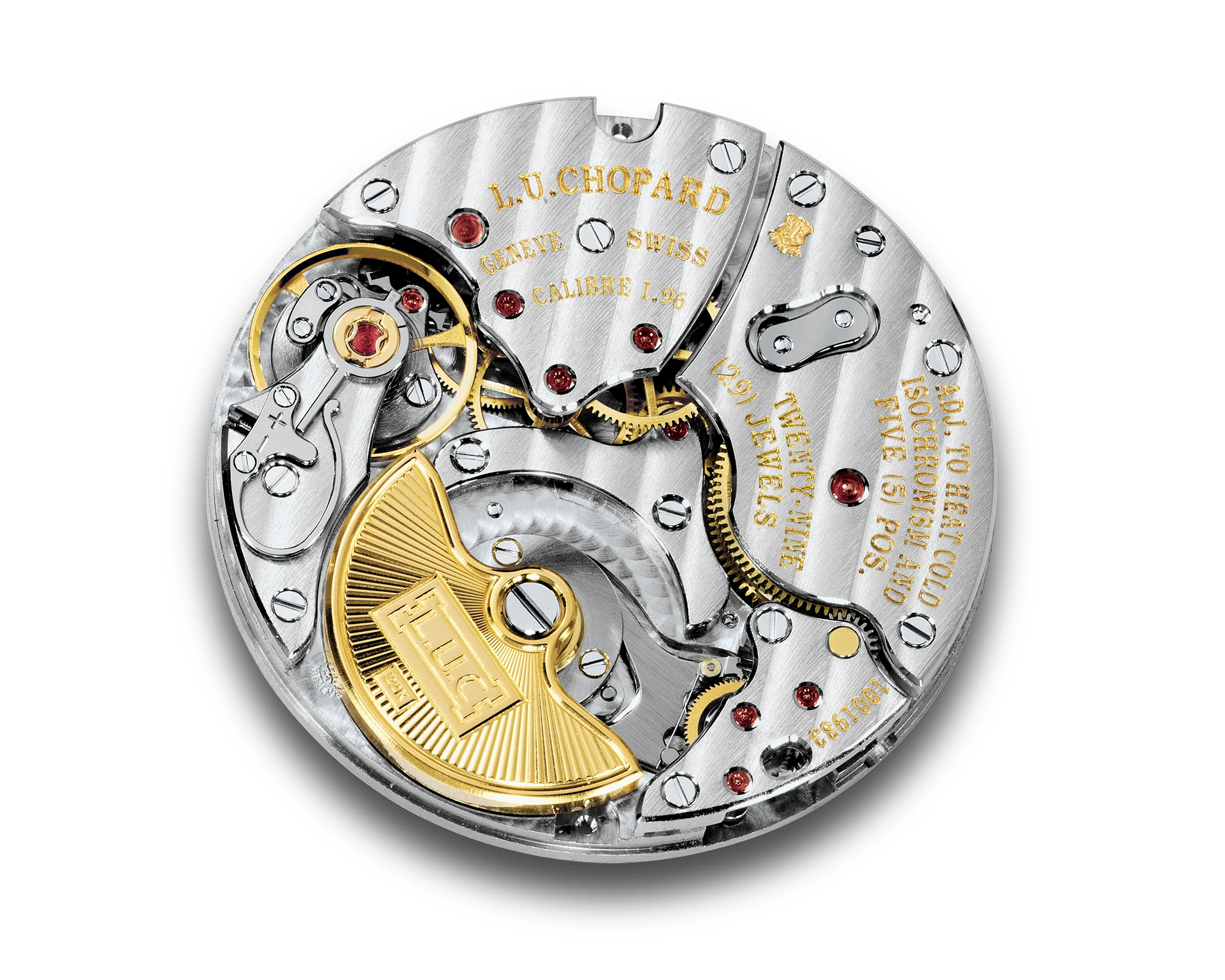
With the aim of extending power autonomy without compromising the slim form or the carefully considered architecture of the 96.01-L calibre, Chopard developed the first L.U.C Quattro (L.U.C 16/1863) based on this inaugural movement, featuring the 98.01-L calibre. With this very movement, Chopard doubled the number of barrels of the original mechanism, enabling the calibre to house four vertically stacked barrels, which secured a power reserve of 9 days – or, put differently, 216 hours. This marked the birth of the “Twin-Technology” –and with it, the “Quattro” line.

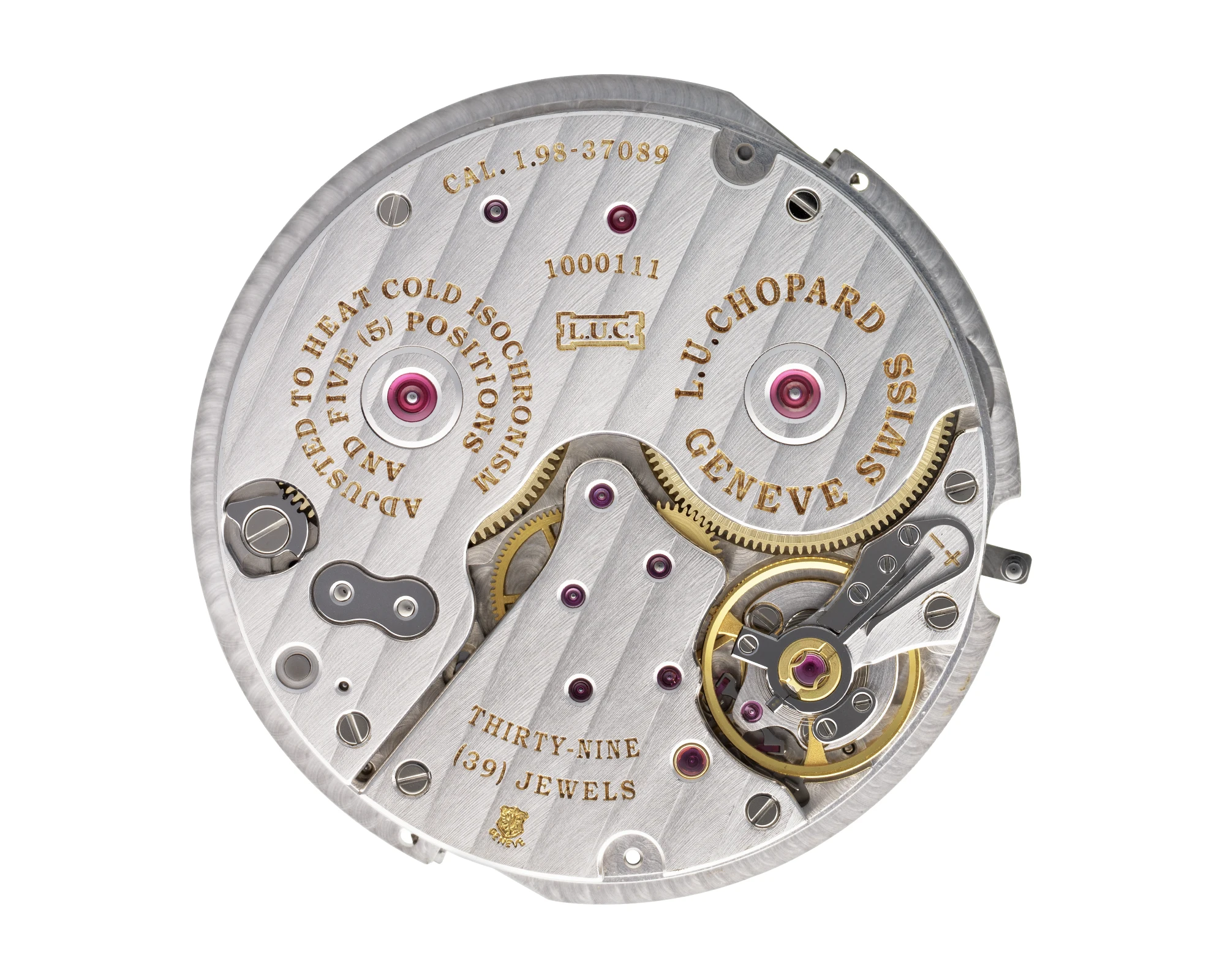
However, the L.U.C 98.01-L calibre holds significance for Chopard in two key respects: not only did it lay a vital foundation for the technical evolution of the L.U.C collection, but its four-barrel mechanism also enabled the development of numerous complications. Among these are the L.U.C Quattro Tourbillon from 2003, which features the L.U.C 02.01-L calibre – a heavily modified version of the 98.01-L. Additionally, the L.U.C Regulator from 2015, equipped with the L.U.C 98.02-L calibre, not only displays hours and minutes separately but also incorporates a GMT function, a date, a small seconds counter, and a power reserve indicator.
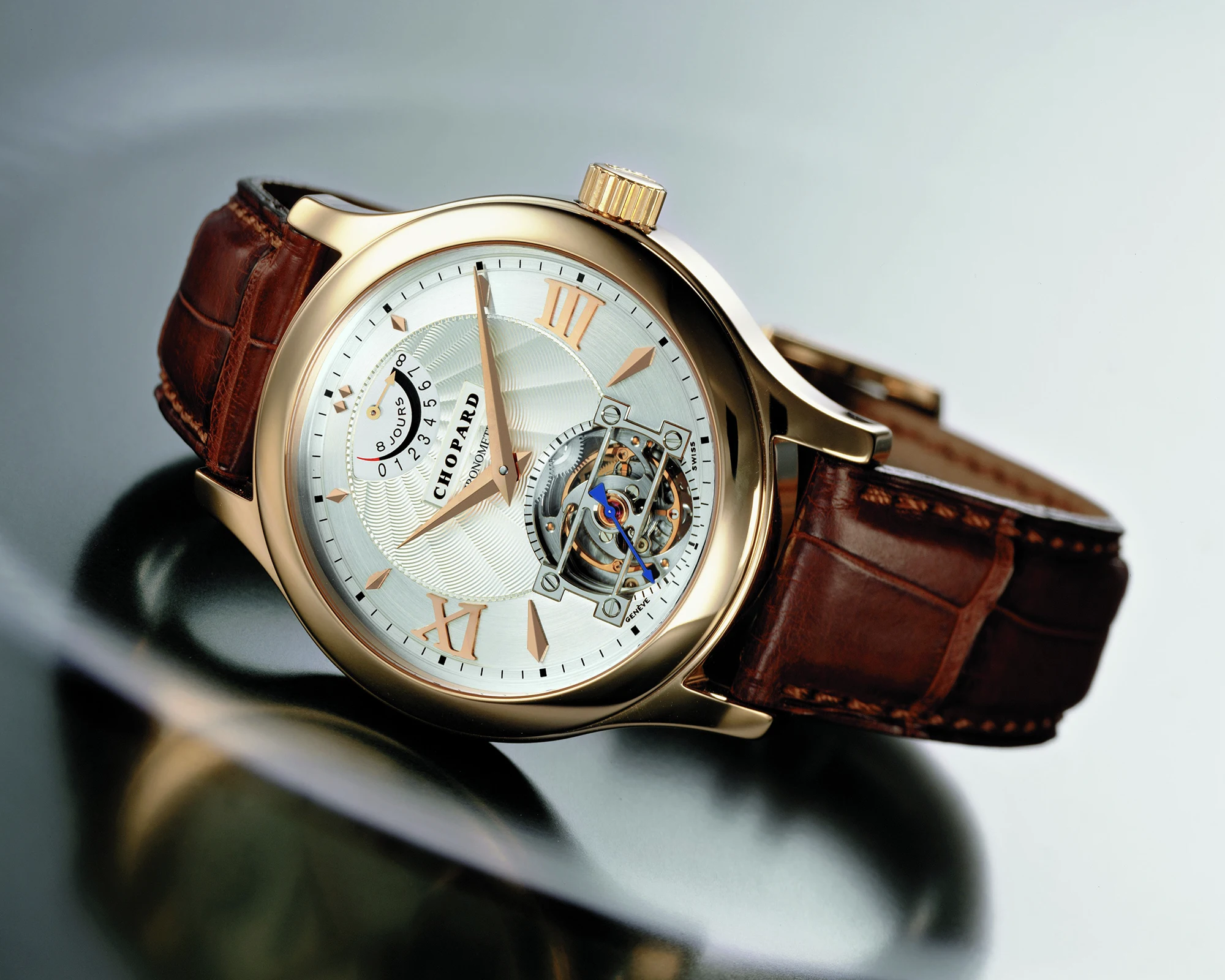
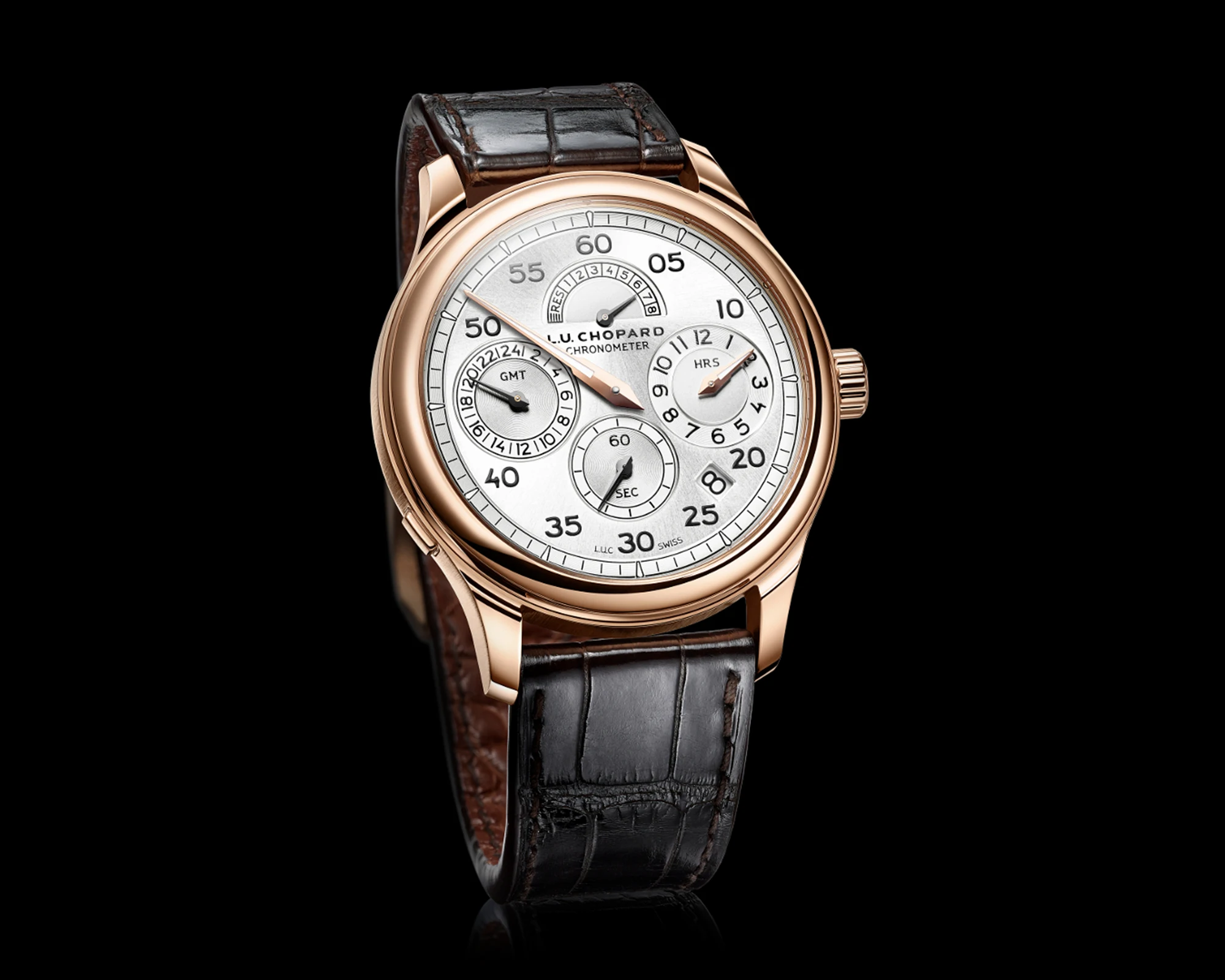
Another notable example is the L.U.C All-In-One, a highly intricate timepiece that combines a 7-day power reserve with 14 indications – including a tourbillon, a perpetual calendar, a sunrise and sunset indicator, and an astronomical orbital moonphase. The L.U.C Quattro Spirit 25 is the most recent addition to the collection; with an eight-day power reserve, this jumping-hour movement sets a record for endurance in a watch of this kind – an achievement that, according to Chopard, remains unparalleled.
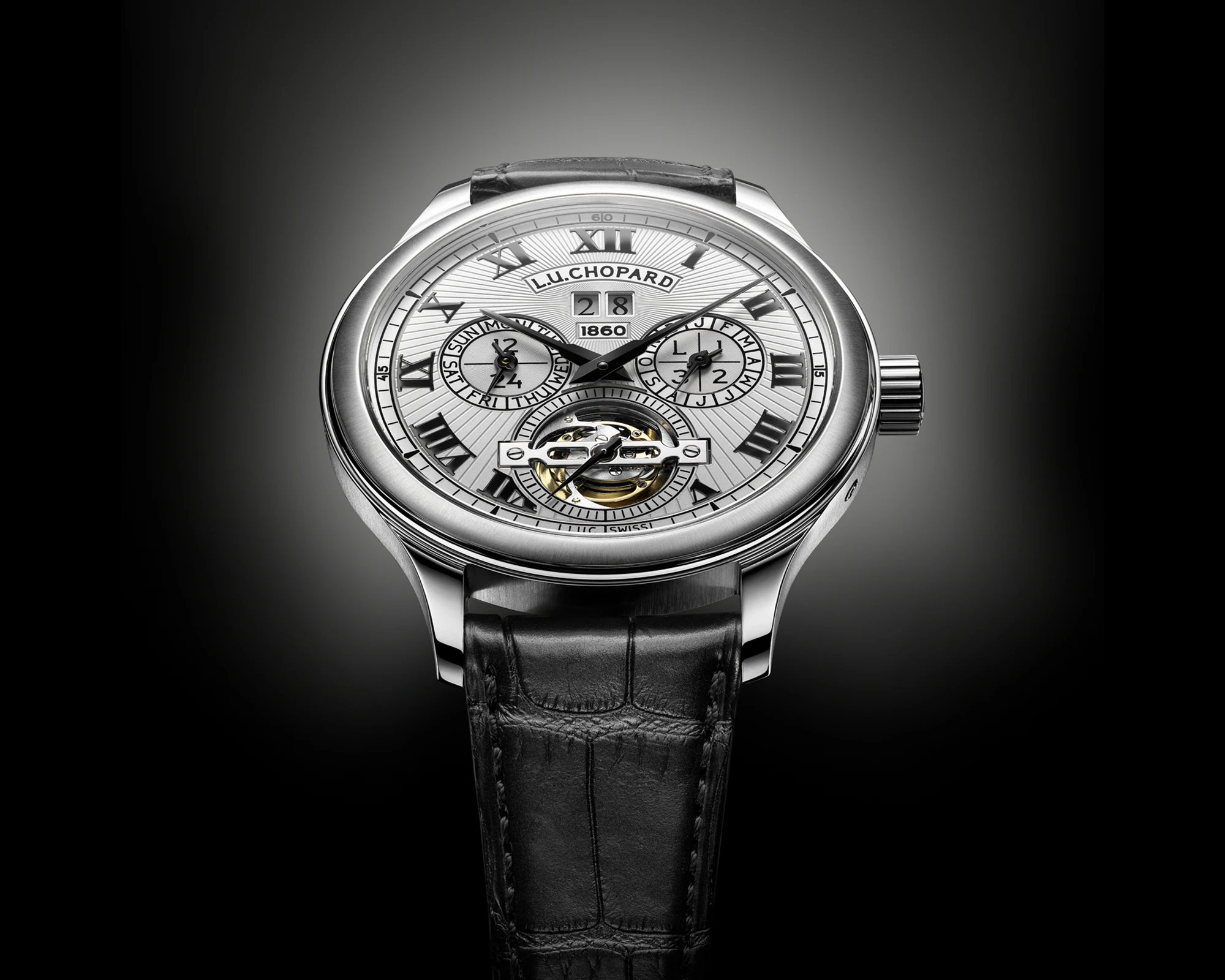

The new case
When unveiling the anniversary model, Chopard did not shy away from refining the case design. With a diameter of 39 mm and a height of 10.40 mm, it is more slender than its predecessors. Deeply rooted in the history of the manufacture, the tapered case shape takes inspiration from the profiles of 19th-century pocket watches, which form part of Louis-Ulysse Chopard’s creative heritage. The case is crafted from 18-carat ethical rose gold.
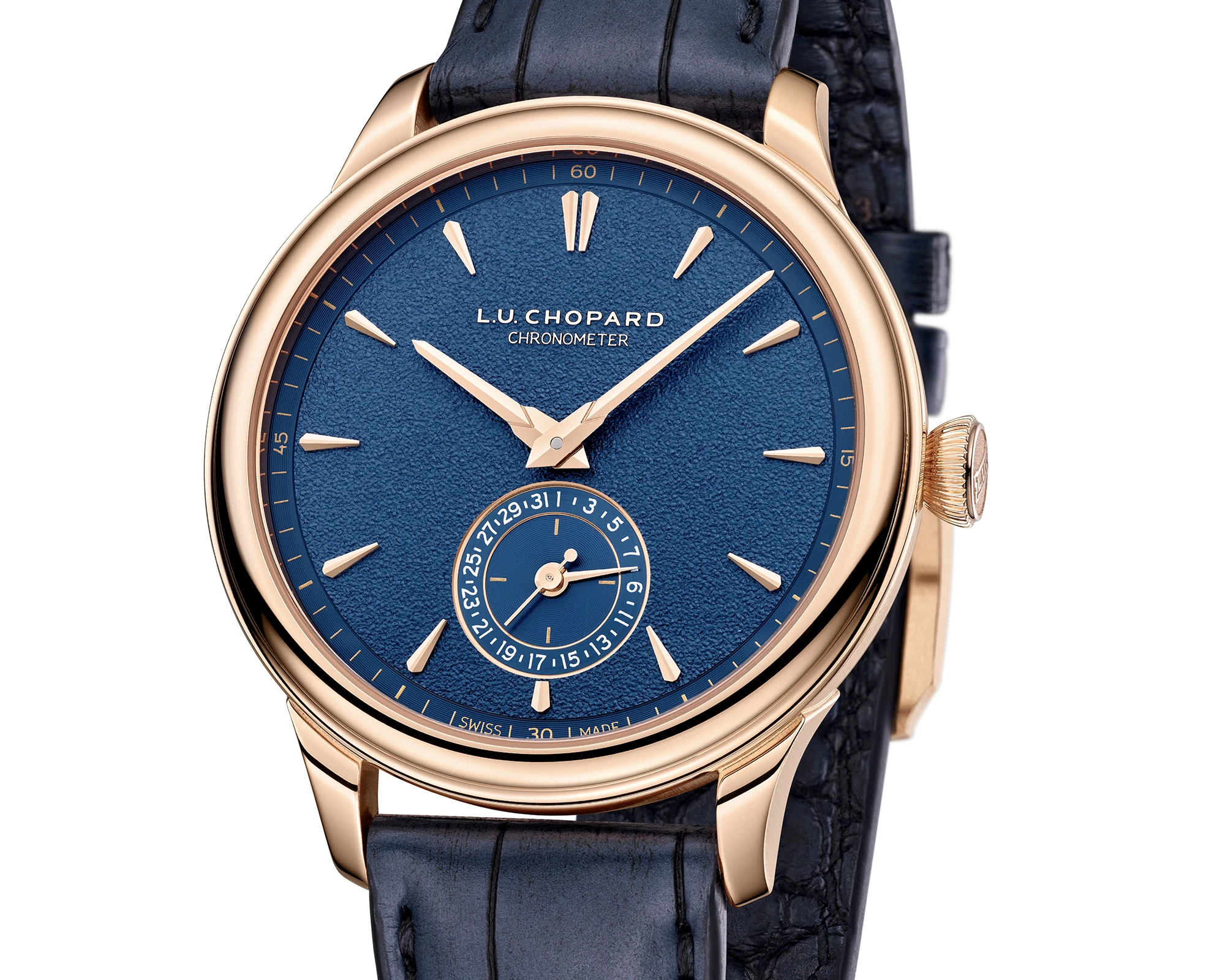
The new case, featuring vertically satin-brushed sides, is paired with a rounded, notched crown that ensures ease of operation. The slightly domed sapphire crystal seamlessly continues the lines of the bezel, resulting in a harmonious overall aesthetic. The craftsmanship is also evident in the separately manufactured lugs, which are welded to the case to ensure a precise fit.
Less is more: The redesigned dial
In this latest anniversary edition, Chopard introduces a new approach to the dial by relocating the power reserve indicator, which previously occupied a prominent position at 12 o’clock, to the movement bridge. This decision enhances the overall aesthetics of the dial – an element that has traditionally enjoyed meticulous craftsmanship – lending it a refined and more understated elegance.
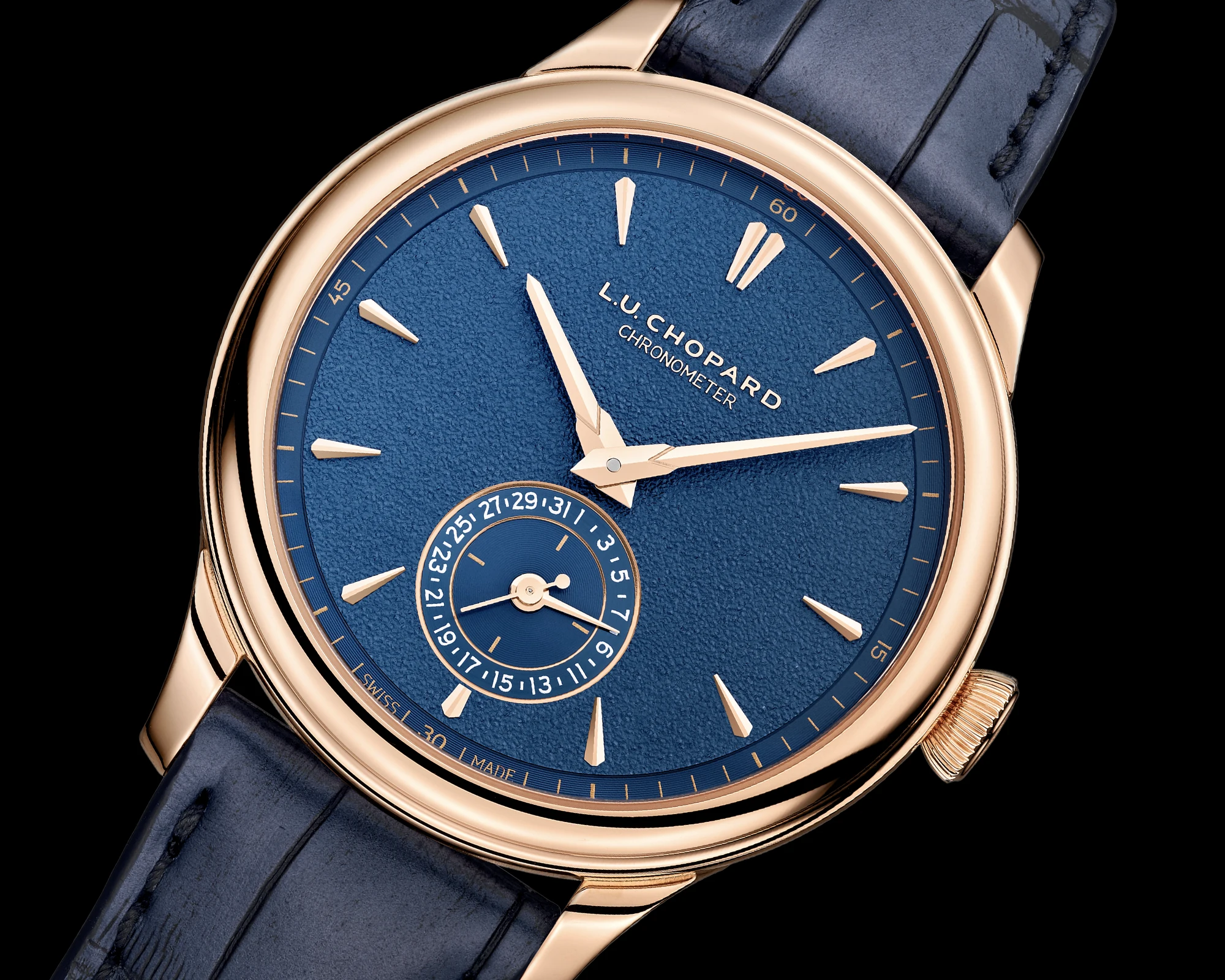
Also contributing to the dial’s minimalist aesthetic are the sharply tapered hour markers in rose gold, which create space for the centrepiece of the watch face: the brass dial, which attains its rich blue hue through a galvanic treatment. The matt surface and the hands, also crafted from rose gold, provide a striking contrast. Additionally, at 6 o’clock, the subdial for the small seconds and the date display can be seen, distinguished by two superimposed hands.
Overall, it becomes evident that this latest innovation not only represents the current but also the future design strategy of the L.U.C collection, adhering to the aesthetic direction first established by the L.U.C Lunar One, launched in January of this year. The latest L.U.C Quattro follows this path: moving away from the large Roman numerals that characterised previous L.U.C Quattro models towards a more pared-back, legible design concept, in which the repositioning of the power reserve indicator directs attention towards the movement.
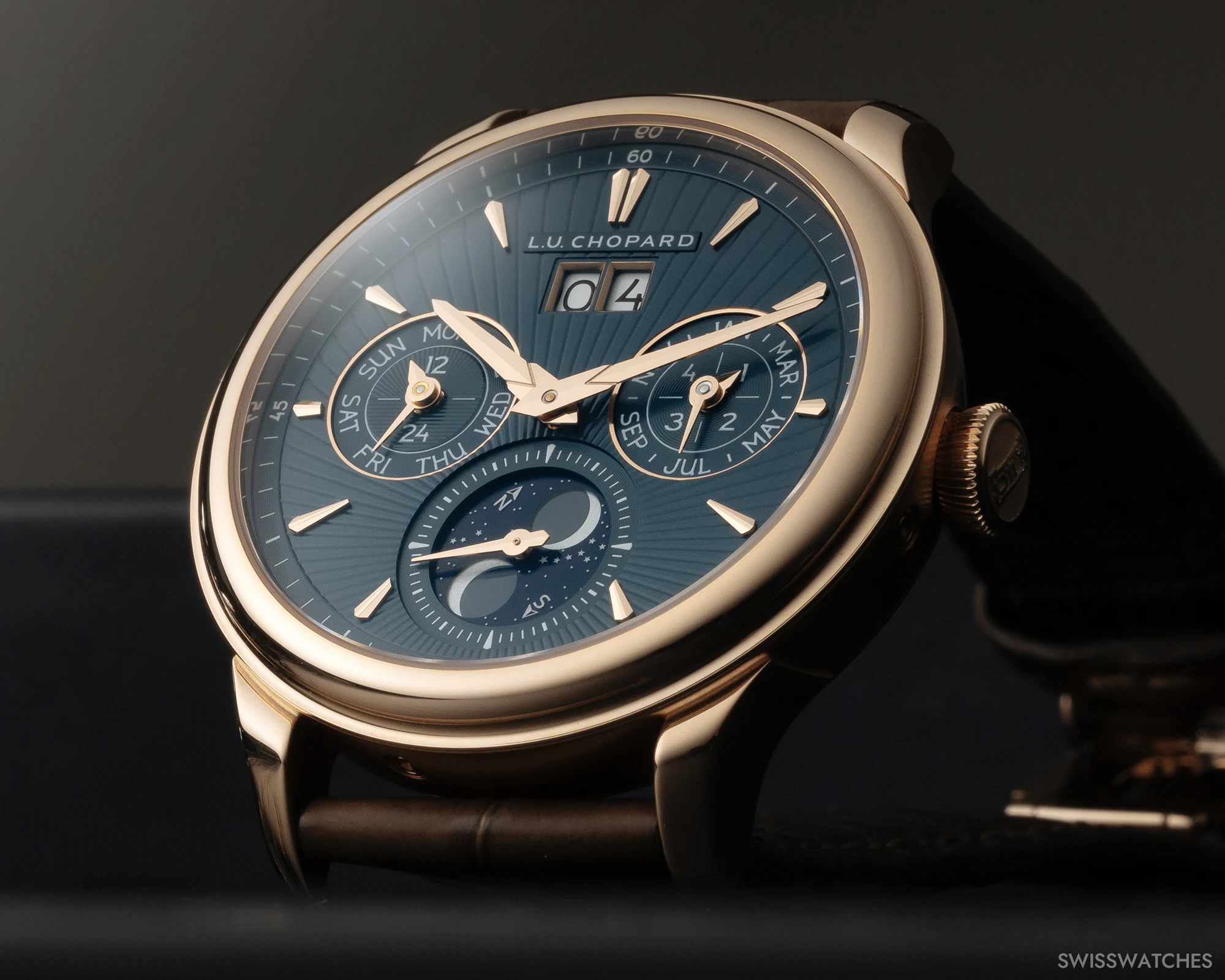
The movement
While the blue dial lends the watch an elegant touch, a glance through the sapphire caseback reveals a movement that will be of particular interest to connoisseurs. The new L.U.C Quattro is equipped with a variant of the L.U.C 98.01-L calibre: the L.U.C 98.09-L. This differs from its predecessor in the placement of the previously mentioned power reserve indicator, which is now positioned on a movement bridge. Additionally, the power reserve indicator has been extended from the usual 8 days to 9 days.

The L.U.C 98.09-L calibre, operating at 28,800 vibrations per hour (4 Hz), is both COSC-certified and adorned with the prestigious Poinçon de Genève (Geneva Seal). The traditional hand-applied decorations on its components are particularly intricate and can be admired through the sapphire caseback. These include Côtes de Genève striping on the main plate, anglage on the bridges, satin-finished wheels, and a finely satin-brushed bridge. The four stacked twin-barrel system accommodates mainsprings with a combined length of 1.885 metres, ensuring a remarkable 216-hour (9-day) power reserve.


